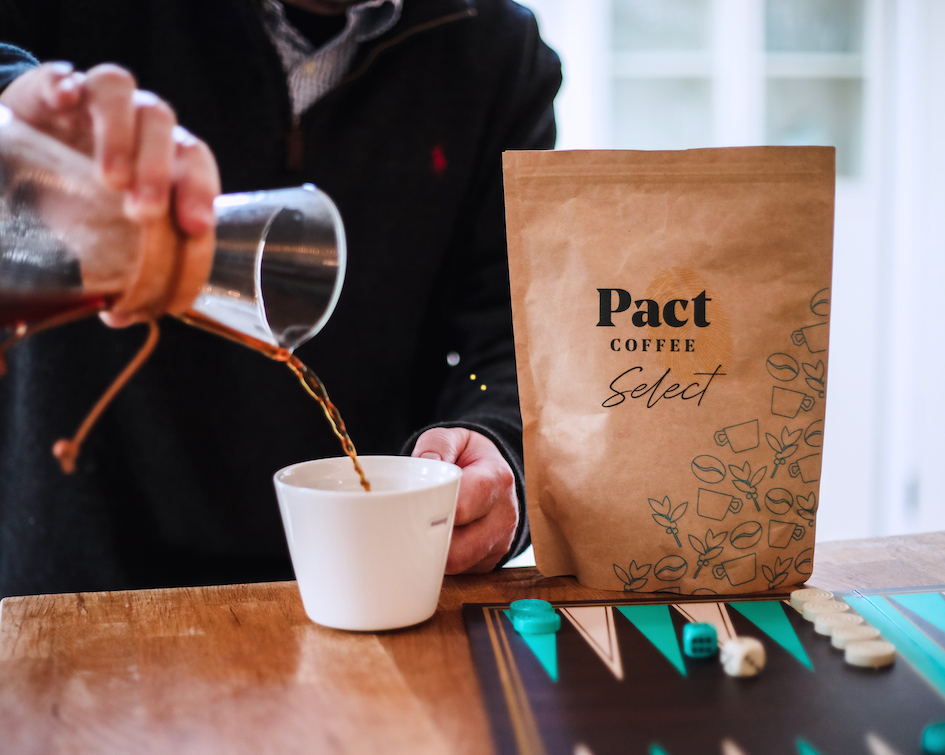With every bag of coffee we sell, we include a description of the coffee flavour profiles – including the tasting notes, acidity, sweetness and mouthfeel. But what creates such different flavours from coffee to coffee?
The answer is: many things! The location, altitude, climate and processing method behind the coffee all contribute to giving it its unique characteristics. Let us explain…
Where is coffee grown?
There are many coffee producing countries across the world, and each has its unique tasting notes. The majority of the coffee we sell comes from Central America, South America and Africa. Here are some of the origins you’ll find on our menu:
Coffee notes by region
Kenya
Juicy blackcurrant notes and a wine-like aftertaste are typical of Kenyan coffees. Much of this is thanks to the high altitude it’s grown at – up to 2,000 metres above sea level.
Ethiopia
Light, fruity with tea-like characteristics due to the country’s mountainous growing regions and the use of the natural processing method.
Peru
Many coffee farms in this region are located on the slopes of the Andes. Peruvian beans are known for rich nutty and chocolatey flavours.
Brazil
The world’s largest coffee producer. The dry processing method typically used here creates big, full-bodied coffees with milk chocolate notes.
Colombia
Altitude once again plays a big role here. High up, the cool air produces aromatic flavour profiles and lively fruity acidity.
Rwanda
Offerings from this country are often grown in nutrient-rich volcanic soil. They tend to be fresh and fruity, with a lively acidity and caramel-like sweetness.
If you’d like to read more about coffee origins, take a look at our blog on this very topic.
What is single origin coffee?
Quite simply, it’s coffee that comes from a single farm. Often the product you’ll find in coffee shops or on supermarket shelves is a blend of coffees (click here for more info on why that is).
Single origin does not necessarily equate to good quality, but it should mean you are tasting a coffee with flavours particular to that origin. The majority of coffee we sell is single origin, but on occasion we create blends by carefully selecting coffees with complimentary flavour profiles.
How does coffee get its tasting notes? Coffee flavours explained
So if it starts with origin, what comes next? Let’s explore the other factors that contribute to coffee flavour profiles.
Altitude
Generally speaking, the higher the altitude, the better the coffee. Far above sea level, the air is cooler, meaning the coffee cherries ripen at a slower pace leading to more complex flavours and a higher acidity – and that’s a good thing!
A developed acidity brings brightness to the cup – Colombian coffees are a perfect example of the kind of quality achieved when coffee is grown at high altitude.
Climate
Weather plays an important role in the successful growing of coffee and its resulting flavour. Arabica coffee grows best in temperatures around 18-21°C. These conditions allow for the ideal maturation of the coffee cherries, leading to developed sweetness and complexity of flavour.
Processing method
This is the process that takes a coffee cherry to a coffee bean. The three main processing methods are washed, natural and honey.
Washed
This involves the cherries being sorted and fermented in water. It arguably produces the greatest clarity of flavour. They tend to be high acidity, with tasting notes including apple and dark chocolate.
Honey
Sweet, low acidity coffees with hints of plum and hazelnut. The process involves de-pulping but not washing the cherries, leaving a golden sticky mucilage on the bean (hence the name) before being left to dry for 2-3 weeks.
Natural
The traditional method that’s very difficult to master for consistency of quality. After picking, the cherries are laid out to dry and regularly rotated for even fermentation. This method develops full-bodied coffees with stewed fruit and milk chocolate flavours.
Fancy running your own taste test?
With single origin coffee sourced from around the world, we have a range of different grinds to suit every taste. Browse our coffees, have it delivered to your door and get tasting!







